What to do if my Yamaha Receiver is not working properly?
- UudouglasSep 7, 2025
If your Yamaha Receiver isn't operating properly, disconnect the power cable from the AC wall outlet and plug it back in after about 30 seconds.
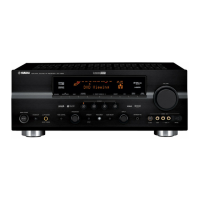
What to do if my Yamaha Receiver is not working properly?
If your Yamaha Receiver isn't operating properly, disconnect the power cable from the AC wall outlet and plug it back in after about 30 seconds.
How to stop crackling noises from Yamaha RX-V663 Receiver?
If there are continuous crackling and hissing noises, use an outdoor antenna and a ground wire.
Why does my Yamaha RX-V663 suddenly go into standby mode?
If your Yamaha Receiver suddenly enters standby mode, wait about 1 hour for the unit to cool down and then turn it back on. This may be due to the internal temperature being too high.
How to stop humming sound from Yamaha Receiver?
If you're hearing a humming sound from your Yamaha Receiver, ensure the audio cables are firmly connected. If the problem persists, the cables may be defective.
Why is the volume low when playing records on Yamaha RX-V663?
If the volume level is low when playing a record on your Yamaha Receiver, connect the grounding cable of your turntable to the GND terminal of the unit. If using a turntable with an MC cartridge, connect it through an MC head amplifier.
| Amplifier Channels | 7.1 |
|---|---|
| HDMI Inputs | 3 |
| HDMI Outputs | 1 |
| YPAO | Yes |
| Zone 2 Output | Yes |
| Component Video Inputs | 3 |
| Component Video Outputs | 1 |
| Analog Audio Inputs | 5 |
| Response Bandwidth | 10 Hz - 100 kHz |
| Signal-To-Noise Ratio | 100 dB |
| Input Impedance | 47 kOhms |
| Input Sensitivity | 200 mV |
| Audio D/A Converter | 192 kHz / 24-bit |
| Digital Sound Processor (DSP) | Yes |
| DSP Preset Qty | 17 |
| Tuner Bands | AM/FM |
| Tuning Range | AM: 530 - 1710 kHz, FM: 87.5 - 107.9 MHz |
| Preset Station Qty | 40 |
| Phono Input | Yes |
| Ethernet Port | No |
| USB Port | No |
| Bluetooth | No |
| Wi-Fi | No |
| Power Output | 95W per channel (8 ohms, 20Hz-20kHz, 0.09% THD) |
| Audio Decoding | Dolby Digital, DTS |
| Digital Audio Inputs | 2 Coaxial |
| Additional Features | Compressed Music Enhancer |
Essential safety guidelines for operating the audio receiver to prevent damage or injury.
Details on the unit's power output, sound field programs, decoders, HDMI, and dock terminal functionalities.
List of included items essential for unit setup and operation.
Steps for installing remote batteries and setting the voltage selector for correct operation.
Overview of necessary items, speaker setup, component connection, and initiating playback via SCENE.
Guidance on optimal placement for various speakers and subwoofers for immersive audio.
Detailed instructions for connecting speaker cables to the unit's terminals, including EXTRA SP terminals.
Explanation of various audio and video jacks and their corresponding cable types.
Specifications for HDMI signals and guidance on connecting HDMI cables and ports.
Instructions for connecting the unit to display devices via various video output options.
Instructions for connecting various audio and video components like DVD players.
Procedure to adjust the unit's speaker impedance setting to match connected speakers.
Explanation of indicators on the remote control and its display window.
Step-by-step guide for performing the automatic speaker setup using the optimizer microphone.
Detailed explanations of various sound field programs for different audio sources.
Pairing Bluetooth devices and playing audio wirelessly.
Step-by-step guide for modifying sound field parameters like DSP LEVEL.
Instructions for using the automatic setup feature for speaker and system parameters.
Guide to manually adjusting speaker and system parameters.
Feature to check audio and video signal information for diagnostic purposes.
Configuring functions of speakers connected to EXTRA SP terminals.
Selecting which speakers output LFE and low-frequency signals.
Enabling test tones for speaker level and distance adjustments.
Manually balancing speaker levels for consistent sound output across all speakers.
Using test tones to aid in graphic equalizer adjustments.
Instructions for setting up remote control codes to operate other audio/video components.
Detailed steps for assigning remote control codes to components.
Requirements and methods for connecting zone 2 audio equipment.
Methods for controlling Zone 2 audio playback using front panel or remote control buttons.
Adjusting speaker impedance settings to match connected speakers.
Procedure for assigning AMP ID codes to the remote control.
Procedure for assigning TUNER ID codes to the remote control.
Solutions for common problems like unit not turning on or no sound.
Explanation of lip sync technology and its role in audio/video synchronization.
Description of bi-amplification connections for speakers and their benefits.
Expl anations of component, composite, and Deep Color video signal systems.
Definitions of Dolby Digital, Dolby Digital EX, and Dolby Digital Plus audio technologies.
Definitions of DTS Express, DTS-HD High Resolution Audio, and DTS-HD Master Audio.
Explanation of the HDMI interface, its capabilities, and compatibility.
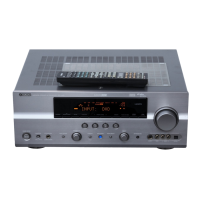
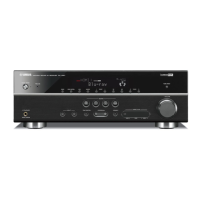
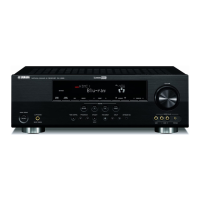
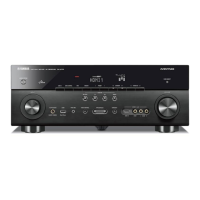
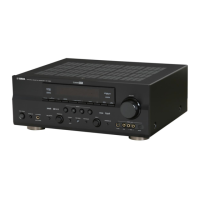
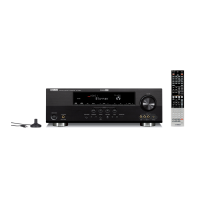
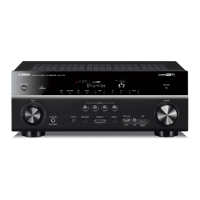
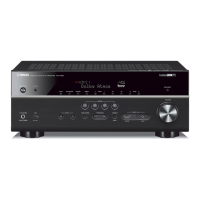
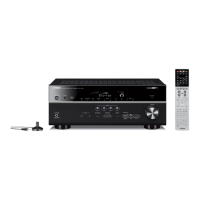
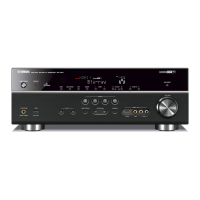
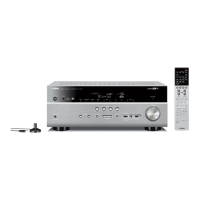

